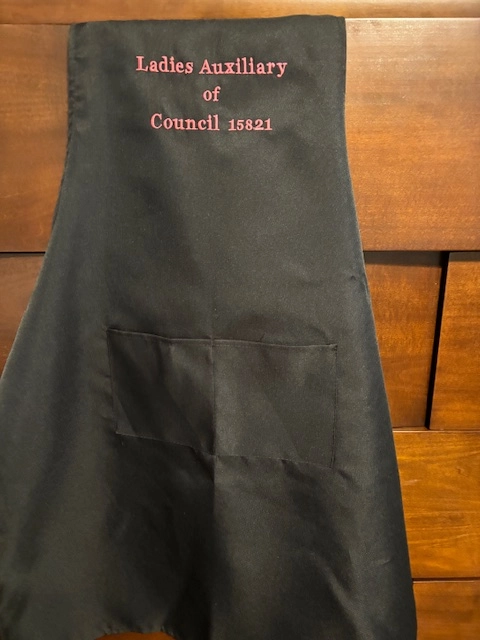Personalized School Uniforms with High-Quality Embroidery Services
Personalized School Uniforms with High-Quality Embroidery Services
Blog Article
The Art of Custom Needlework: Unlocking the Tricks to Creating One-of-a-kind and Remarkable Designs
The secrets to producing customized needlework designs that captivate the eye and leave a long lasting impression lie in a fragile equilibrium of method, creativity, and focus to information. As we delve right into the globe of custom-made embroidery, we uncover the nuanced interplay between thread option, sew intricacy, and design personalization that boosts a mere garment to a job of art.
Selecting the Right Needlework Threads
When choosing embroidery strings, what crucial variables should you take into consideration to make sure the very best outcomes for your customized layouts? The choice of embroidery string is critical in establishing the final end result of your stitched layout. One of the primary considerations is the material of the string. Different materials such as cotton, polyester, rayon, and silk provide differing levels of sheen, longevity, and texture. It is crucial to select a thread material that matches the fabric you are embroidering on and lines up with the preferred appearance of the design.
Thicker strings can add measurement and appearance to your layout, while finer threads are ideal for elaborate details and tiny message. Furthermore, thinking about the color fastness and washability of the thread is crucial to make certain that your customized layouts maintain their top quality and vibrancy over time.
Checking Out Different Stitch Methods
To explore the world of 'Discovering Different Stitch Methods', one must understand the details and nuances that each sewing approach gives the art of needlework. Various stitch strategies not just include visual rate of interest yet likewise contribute to the general texture and dimension of the design. One prominent stitch technique is the satin stitch, which includes very closely jam-packed parallel stitches to create a smooth and glossy surface area, suitable for filling out shapes and developing strong outlines.
On the various other hand, the backstitch is a functional technique often used for describing and including great details. It includes sewing backward to create a solid line of embroidery. In addition, the French knot stitch includes a tactile aspect to designs, ideal for developing distinctive accents like flower facilities or ornamental touches.
Discovering various stitch techniques allows embroiderers to play with light, darkness, and depth within their styles, boosting the aesthetic allure and artistic top quality of their needlework tasks. By understanding various stitching methods, one can open unlimited possibilities for producing special and remarkable custom needlework pieces.
Incorporating Personalized Layout Components
Having actually discovered the intricacies of various stitch methods such as the satin stitch, backstitch, and French knot, the emphasis currently changes in the direction of including personalized style elements in custom embroidery projects. Personalized design elements play a crucial duty in making needlework tasks genuinely unique and unforgettable. One method to incorporate personalization is by including initials, names, or substantial days to the style. This not just adds a customized touch however also enhances navigate to this site the emotional worth of the embroidery piece.
An additional method to incorporate individualized design components is by including icons or themes that hold unique meaning to the recipient or show their passions and character. Including a preferred flower, animal, or hobby-related icon can make the embroidery style a lot more significant and personalized. Furthermore, choosing colors that reverberate with the recipient or align with the desired theme can better enhance the customization of the needlework project.
Mastering the Art of Color Control
One secret aspect of shade coordination is comprehending color theory. This includes recognizing how various colors engage with each other, the feelings they communicate, and just how they can be combined to develop visually attractive layouts. By using color theory concepts, embroiderers can create harmonious shade schemes that boost the general appearance of the design.
Furthermore, focusing on contrast is important in color control. Utilizing contrasting shades can aid certain aspects of the style pop, enhance legibility, and produce an aesthetically vibrant embroidery piece. By grasping the art of shade coordination, embroiderers can raise their styles and develop memorable pieces that resonate with clients and customers alike.
Enhancing Appearance With Advanced Embroidery Stitches

French knots, as an example, are excellent for adding tiny, elevated dots to your layout, mimicking the appearance of grains or developing a distinctive surface. Bullion knots, on the other hand, can be used to create twisted, ropelike components that add a luxurious feeling to the needlework. Seed sewing includes tiny, scattered stitches that can fill out locations with a speckled texture, while turkey job produces fluffy, dimensional accents reminiscent of pet hair or foliage. Explore these advanced needlework stitches allows you to push the boundaries of typical embroidery and create absolutely special and aesthetically attractive textures in your layouts.
Verdict
In final thought, the art of custom needlework includes a combination of selecting the appropriate threads, discovering numerous stitch strategies, incorporating personalized style components, mastering shade sychronisation, and boosting texture with sophisticated stitches. By understanding and carrying out these crucial elements, embroiderers can create distinct and remarkable layouts that showcase their creativity and ability. Embroidery lovers can unlock the tricks to creating stunning and custom items that stand out and leave an enduring impact.
Report this page